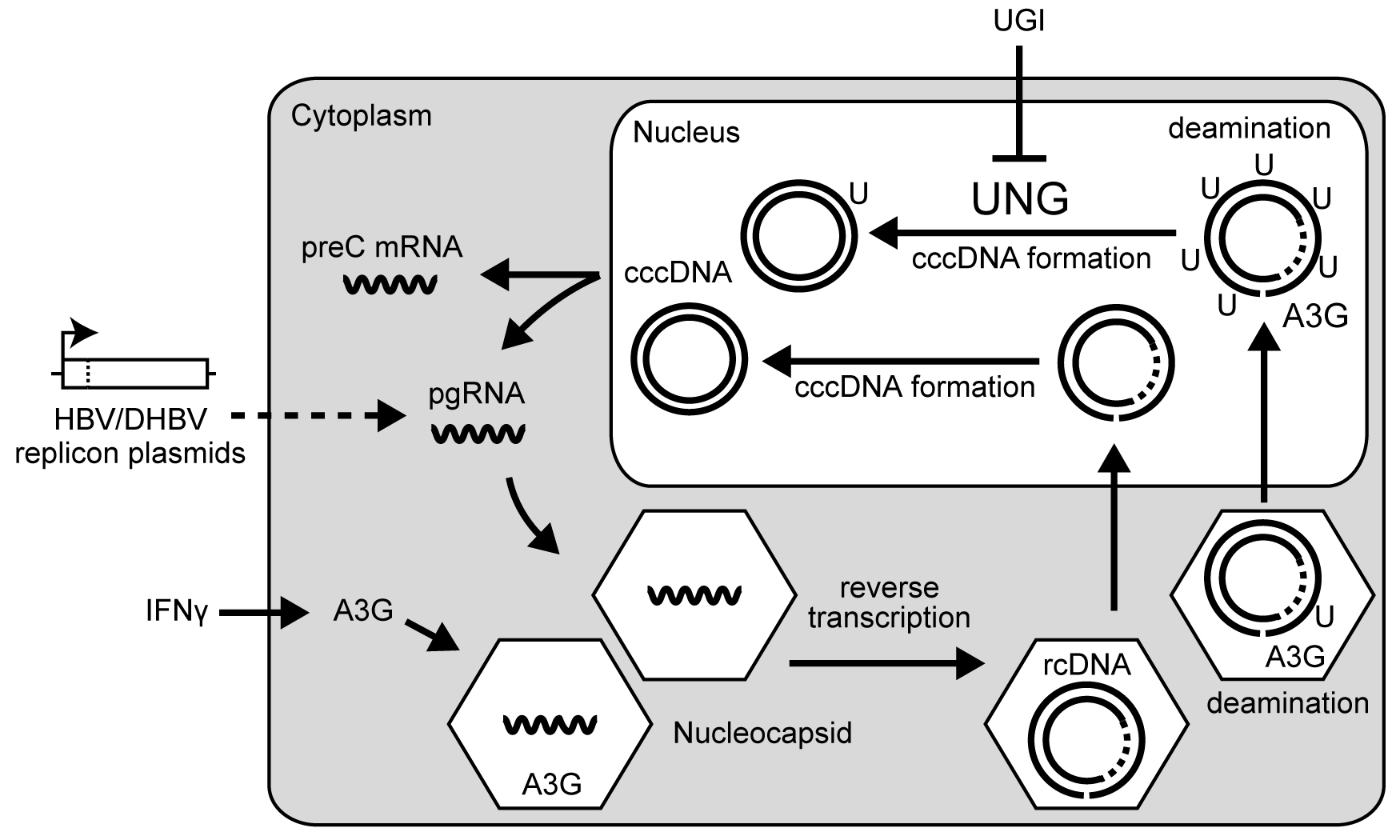- Home
- Highlights
- Hepatitis B virus control: identifying proteins in mutation management
Highlights
Hepatitis B virus control: identifying proteins in mutation management
The hepatitis B virus (HBV) is a primary cause of chronic liver disease. So far the persistence of the virus has not been fully explained. Recently researchers showed that a group of proteins – apolipoprotein B mRNA editing catalytic polypeptide (APOBEC) proteins – were found to inhibit replication of the virus but the exact mechanism remained a mystery. Now researchers at Kanazawa University Graduate School of Medical Science in Japan have determined how APOBEC proteins mediate hypermutations that inhibit viral replication. They also identify the host factor protein UNG that can repair these mutations.
The HBV genome form is converted into stable covalently closed circular DNA (cccDNA) in the nuclei of liver tissue cells when they are infected. As the authors point out, “cccDNA is not targeted by anti-HBV drugs and thus enables the re-establishment of viral replication after cessation of antiviral therapy.” However the lack of an experimental system that can produce cccDNA in sufficient quantities for investigation has limited what is known about the host factors that control cccDNA.
Masamichi Muramatsu and colleagues at Kanazawa University Graduate School of Medical Science used an avian counterpart for HBV – duck HBV (DHBV) – to investigate the role of the host factor UNG in viral hypermutation in cccDNA. DHBV shares many similarities with HBV with an important advantage for experimental investigation; it reproduces cccDNA more efficiently.
Transfection experiments showed that cccDNA hypermutation was enhanced on UNG inhibition in APOBEC3G expressing cells, resulting in a significant decrease in viral production. “We speculate that the balance between AID/APOBECs and UNG activities on mutation frequency decides the consequence to hepadnaviruses: deleterious mutations vs. diversification,” suggest the researchers. Their future research will look into the possible role of APOBECs and factors like UNG in the emergence of drug-resistant mutants of HBV and DHBV.
Publication and Affiliation
Kouichi Kitamura, Zhe Wang, Sajeda Chowdhury, Miyuki Simadu, Miki Koura, and Masamichi Muramatsu*. Uracil DNA Glycosylase Counteracts APOBEC3G-Induced Hypermutation of Hepatitis B Viral Genomes: Excision Repair of Covalently Closed Circular DNA. PLoS Pathog 9(5): e1003361. doi:10.1371/journal.ppat.1003361.
Link
Department of Molecular Genetics, Kanazawa University Graduate School of Medical Science, Kanazawa, Japan
*corresponding author, e-mail address: muramatu@med.kanazawa-u.ac.jp
ID: 201306H023

